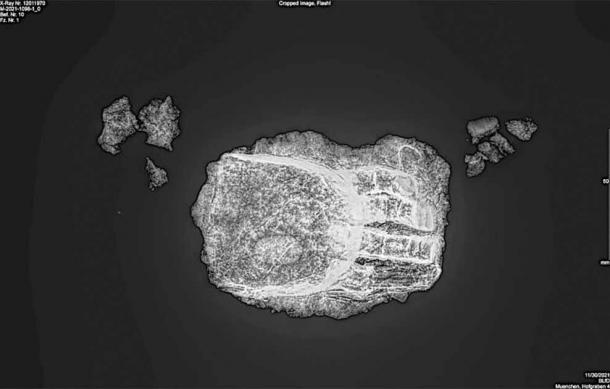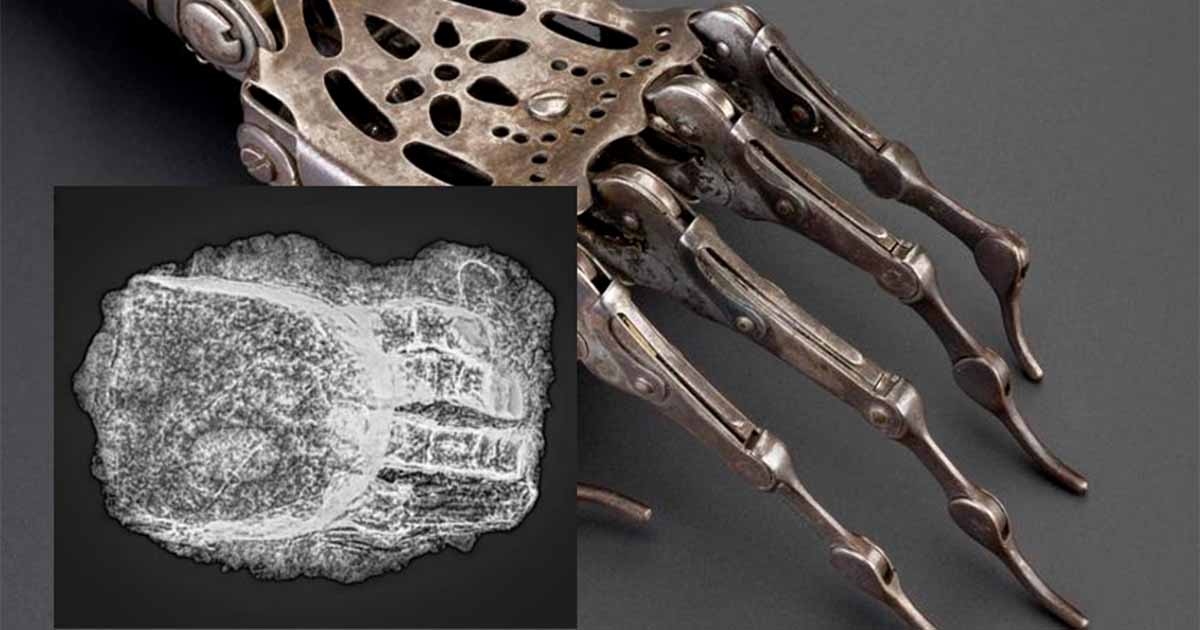Archaeologists Unearth a Medieval Skeleton with a Prosthetic Hand
In an extraordinary archaeological discovery in Freising, Germany, experts have unearthed a medieval skeleton equipped with an iron prosthetic hand. The burial, dated to the 15th century, offers compelling evidence of early prosthetic technology and medical innovation.
This find was announced by the Bavarian State Office for Monument Preservation during excavation works near the Church of St George. Carbon dating suggests the man, aged between 30 to 50, lived and died sometime between 1450 and 1620. This period in European history witnessed a surge in the evolution of prosthetics, driven in part by the need to aid injured soldiers returning from numerous conflicts.

The recovered prosthetic hand encased in sediment. Sections of gauze can be seen over some of the fingers. Source: Bavarian State Office for Monument Preservation
Iron Prosthetic Hand
Freising itself, as a bishop’s see and later an independent state, wielded significant influence during the Middle Ages. Its history was punctuated by military campaigns, including engagements during the devastating Thirty Years’ War. Such turbulent times would have resulted in numerous injuries, amputations, and thus an increased demand for prostheses.
According to Dr. Walter Irlinger of the Bavarian State Office for Monument Preservation, the prosthetic device is truly remarkable. “The hollow hand prosthesis on the left hand added four fingers. The index, middle, ring and little fingers are individually formed from sheet metal and are immovable. The finger replicas lie parallel to each other, slightly curved.” Irlinger explained. Secured with straps, this prosthetic device underscores the medical ingenuity of the time.
Furthermore, inside the iron prosthetic, researchers identified gauze-like fabric, likely used as cushioning for the amputee’s hand stump. Notably, a thumb bone was attached to the inner side of the prosthetic, indicating that the wearer had retained his thumb post-amputation.
- Like Something Out of The Walking Dead: Medieval Warrior Found with Knife Hand Prosthesis
- 16th Century Prosthetic Iron Hand: The Story of Gotz von Berlichingen

A scan of object reveals the prosthetic hand with four metal fingers. Source: Bavarian State Office for Monument Preservation
Medieval Prosthetics
Historically, while this find is exceptional, it's not unique. There are approximately 50 known prosthetic devices from the late Middle Ages and early modern period in Central Europe. They range from rudimentary, non-moving models to intricate devices with mechanical components. The famed knight, Götz von Berlichingen, is a notable figure from this era. He wore an "Iron Hand" prosthetic after losing his right hand during the siege of Landshut in 1530. Unlike the Freising discovery, von Berlichingen's prosthetic was a marvel of engineering for its time, featuring movable parts and a complex design.

The iron prosthetic hand worn by Götz von Berlichingen. (Public Domain)
In 2018, a remarkable prosthetic discovery was made in the Longobard necropolis in Verona. Archaeologists uncovered a Medieval warrior with an amputated forearm that had healed over time. Nearby, they found a buckle and a knife, suggesting that the warrior might have used the knife as a prosthetic replacement for his hand.
This discovery in Freising provides valuable insight into the use and development of prosthetics during the 15th century. The detailed craftsmanship of the iron hand from Freising, as well as other prosthetics like the one worn by Götz von Berlichingen, demonstrate the medical advancements and adaptability of the period.
Top image: Main: An historical prosthetic hand (The Board of Trustees of the Science Museum). Inset: A scan of the prosthetic hand found in Freising (Bavarian State Office for Monument Preservation).

















